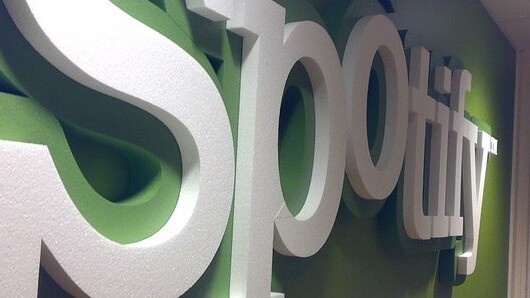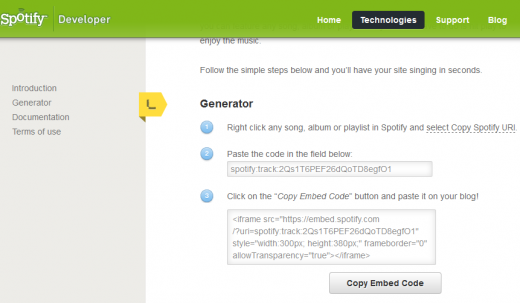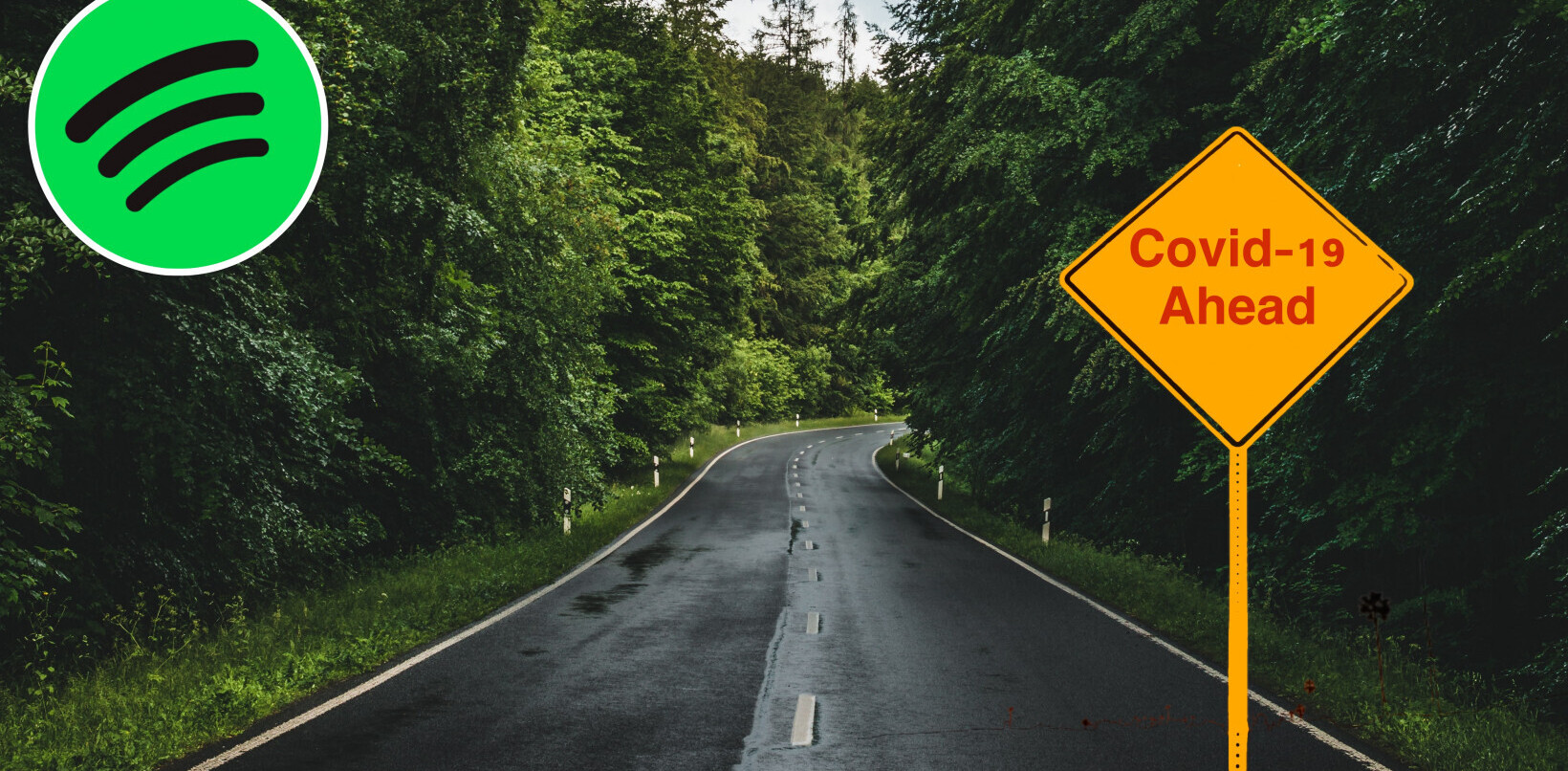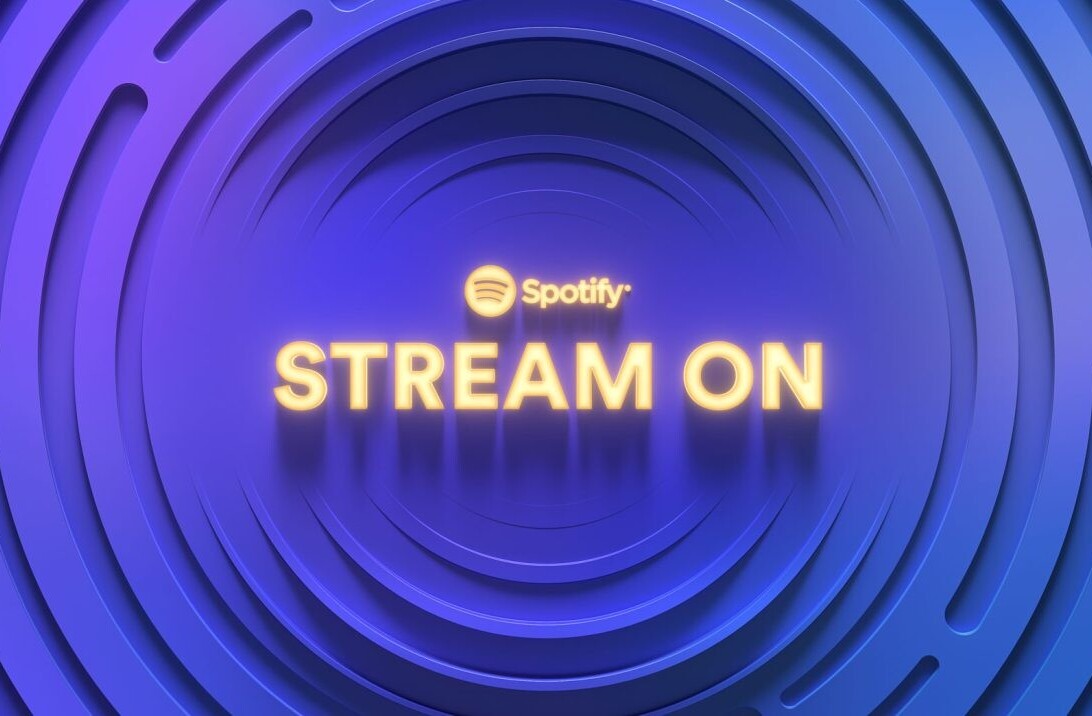
In case you missed it, Spotify launched its embeddable Play Button earlier today, letting you embed any Spotify song, album or playlist directly into your website. Just like YouTube, right? Erm, no actually. Now that the initial dust has settled, it’s worth reflecting a little and seeing what’s on offer here and how much this is likely to change things.
Just to recap, here’s how the embed option works. You right-click on any individual track, album or playlist within Spotify, copy its URI, and then head here to attain the embed code.
You then copy the embed code, and then paste it to wherever you want on your website:

Ignoring the fact that you can simply paste YouTube links into your WordPress blog to embed a video, this all does seem very similar – on the surface – in terms of how you attain the embed code and what it lets you do. However, the Spotify Play Button doesn’t offer quite as much as it initially promises.
The crux of the issue: You need Spotify
As we noted earlier today, Spotify is still only available in thirteen countries – the USA, UK, Sweden, Finland, Norway, Denmark, France, Germany, Switzerland, Austria, Belgium, the Netherlands and Spain. And as such, the embedded music will only be playable in these countries.
Whilst there were some utterances of disapproval at this across the social sphere earlier today, I don’t really see any problem with this from Spotify’s perspective. Its service is only available in these countries, and that is the nature of licensing music – when it manages to scale up and open to more countries, it will then be able to offer these embeds to more countries. Legally. Embedding content doesn’t magically allow it to circumvent the laws of the land.
However, the main problem is this. Even in countries where Spotify is legally allowed to stream its music to the masses, you still need the Spotify desktop app installed on your computer to play the embedded music. So let’s assume you stumble upon an embedded Spotify playlist on your favorite blog, and it looks like you can just ‘click and play’, it won’t play if you are not already logged-in to a Spotify account. It will invite you to log-in to Spotify, or you can download it if you don’t have it already.
Whilst I’ve heard some people say it’s just a nicer looking hyperlink, I’d say that such a statement does this latest development an injustice – it is a useful, nice feature. And if you do have Spotify on your machine, then this does let you operate and manage the tracks from the browser, even though it’s relying on the Spotify app itself.
Spotify may have somewhere in the region of 10m users, but the likes of Deezer, Rdio and a host of other services have their hats in the music-streaming ring too. The way Spotify has done this will likely put a lot of sites off using this. Why would they embed its music when a large tranche of their visitors won’t have Spotify?
Of course, that is likely Spotify’s goal here. People will try to play music in a browser, they won’t be able to, then they will be guided towards installing the app and, further down the line, they may become a fully-paying member. Whether that actually happens or not, though, remains to be seen.
Take SoundCloud. You can properly embed a SoundCloud song on your site, and you don’t have to rely on the user launching the SoundCloud application. It plays right there, in your browser. I can’t help but think Spotify has missed a trick with this launch, as it would’ve really opened up its platform to the masses. Embeds shouldn’t launch external apps, end of story.
However, such a move could be on Spotify’s roadmap. By enabling a Web-powered Spotify-embed, it would greatly encourage bloggers and news sites to build playlists, tracks and albums into relevant stories. The Spotify logo would be everywhere, and you can’t put a price on that kind of marketing.
As it stands, the embeddable Play Button is, well, an awesome idea. But I feel it has fallen a little bit short of what people would really like.
Get the TNW newsletter
Get the most important tech news in your inbox each week.




